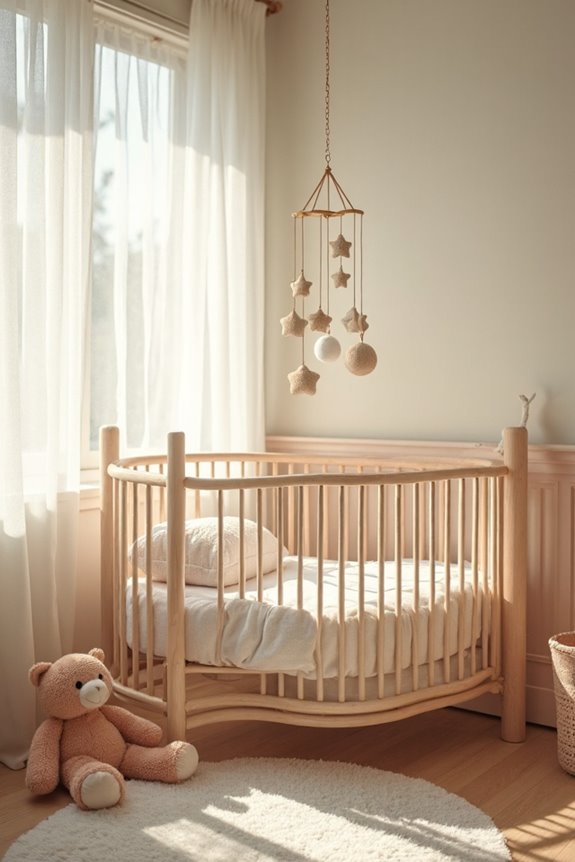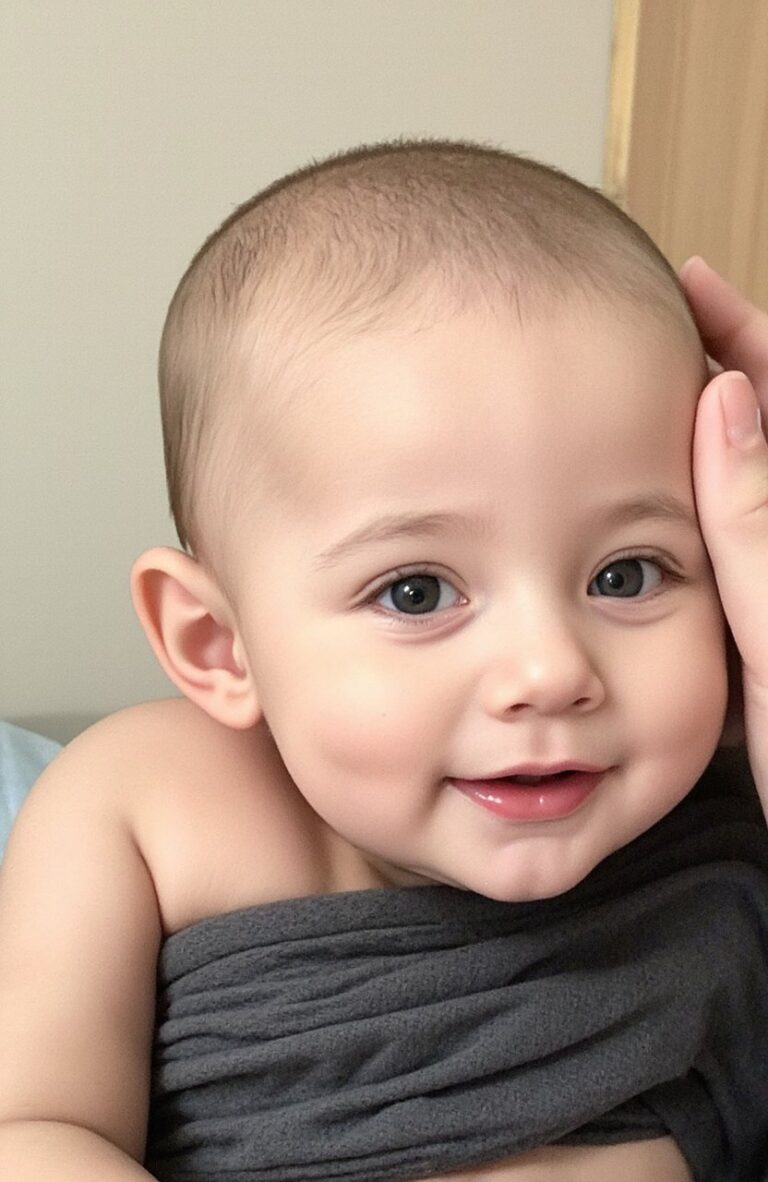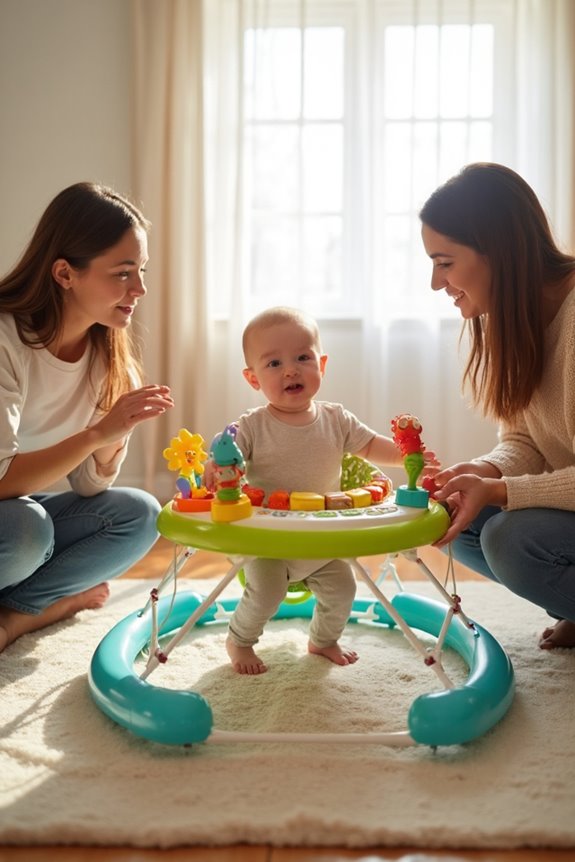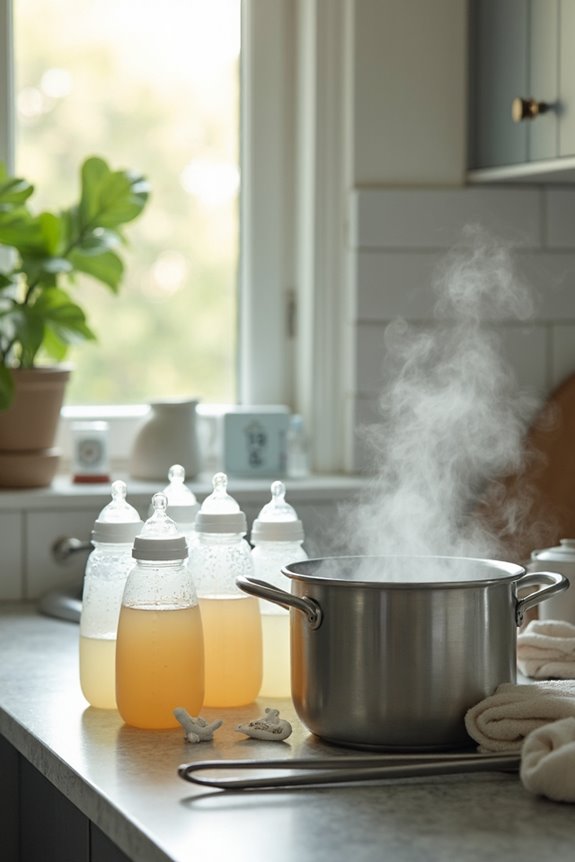We should wait until a child is around two years old before introducing a pillow. At this age, their neck muscles are more developed, reducing suffocation risks. Choose a flat, firm, breathable pillow, about 12×16 inches, for safe head and neck support. Keeping sleep environments free from hazards is crucial. Pediatric experts emphasize safety over aesthetics; the U.S. Consumer Product Safety Commission sets strict guidelines. Let’s explore the balance between comfort and safety as children grow.
Key Takeaways
- Babies should not use pillows until at least 1 year old to prevent suffocation risks.
- Introduce a flat, firm pillow made of breathable materials around age 2.
- Wait until neck muscles are fully developed, typically by six months, for better head control.
- Always maintain a firm, flat sleep surface without pillows for infants under 12 months.
- Monitor toddlers’ interest in pillows and choose small, hypoallergenic options for safety.
Understanding the Risks of Pillows for Babies
When it comes to understanding the risks of pillows for babies, it’s crucial to recognize why these seemingly harmless items can be dangerous. We need to consider pillow types and their effects on infant safety. Pillows can cause airway obstruction, especially since babies lack full head and neck control. This can lead to suffocation risks as pillows might cover the nose and mouth.
- Soft or fluffy pillows: Increase the risk of rebreathing exhaled air.
- U-shaped pillows: Restrict head movement, leading to fatal incidents.
Sadly, statistics reveal that nursing pillows contribute to about 12 infant deaths annually. Let’s remember, a safe sleep environment means a firm, flat surface without pillows. We must prioritize infant safety by understanding these dangers.
Age Guidelines for Introducing Pillows
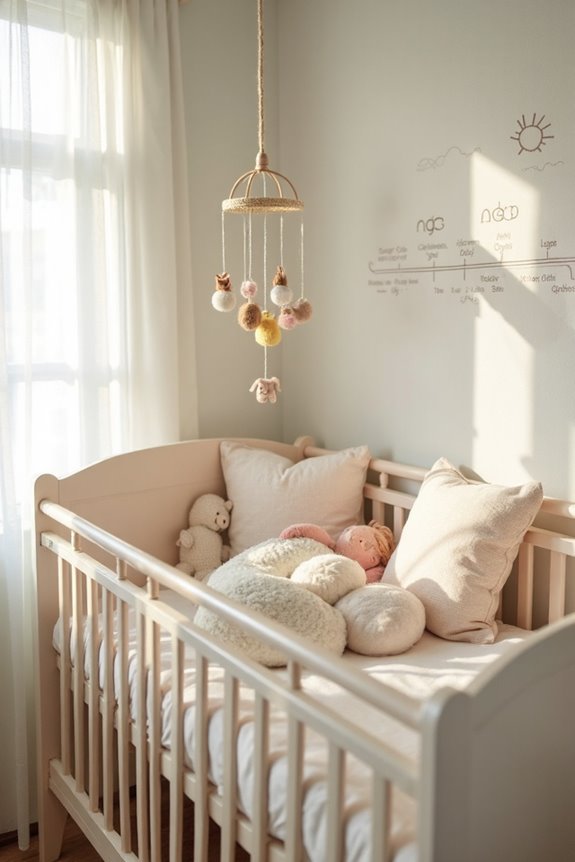
Introducing a pillow to your baby’s sleep environment is a milestone that shouldn’t be rushed. We need to be mindful of safety guidelines and child preferences when considering pillow types. Here’s what experts suggest:
- Infant Safety: Babies should sleep on a firm, flat surface without pillows until at least 1 year old. This helps prevent risks like suffocation.
- Toddler Stage: Around age 2, introducing a flat, firm pillow made from breathable materials is recommended. It aligns with developmental readiness while maintaining safety.
- Pre-School Age: By ages 4-6, children might start showing preferences for specific pillow types. Ensure these provide comfort and support.
- Older Children: By ages 6-10, transitioning to standard pillows is common. Prioritize comfort and material safety.
Let’s prioritize safety and comfort as we introduce pillows.
The Role of Neck Muscle Development
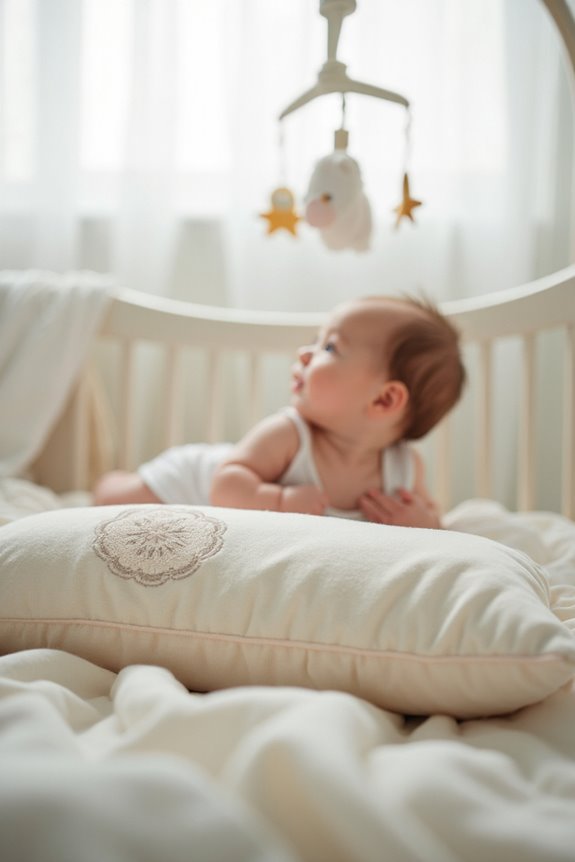
Although neck muscle development is often overlooked, it plays a crucial role in your baby’s overall growth and safety. As we observe our little ones grow, it’s fascinating to see how neck strength and muscle coordination evolve. At birth, infants have weak neck muscles, needing our support to control their heads. By two months, babies begin to develop some neck strength, and by three months, they can partially hold their heads upright.
- Tummy Time: This essential activity aids in strengthening neck muscles, improving balance and coordination.
- Six Months Milestone: By this time, most babies achieve full head control, a key indicator of neck muscle development.
- Motor Skills: Stronger neck muscles support motor skills like rolling and sitting, enhancing overall coordination and posture.
Key Safety Standards for Infant Products
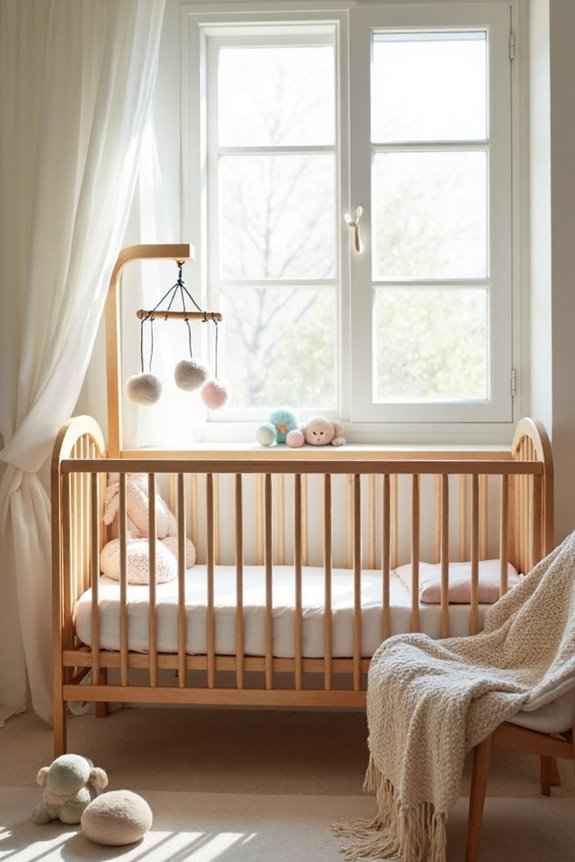
As we navigate the world of infant products, understanding key safety standards is essential to ensuring our little ones’ well-being. When considering infant product safety, it’s crucial to keep in mind the specific regulations that protect our babies from harm.
- Maximum Incline Angle: Infant support cushions should have no more than a 10-degree incline to prevent dangerous head and neck positions.
- Cushion Firmness: Products must pass firmness testing to minimize suffocation risks.
- Sidewall Angle Testing: The angle must be greater than 90 degrees to prevent entrapment.
The U.S. Consumer Product Safety Commission (CPSC) plays a vital role in regulating these standards, addressing concerns like suffocation and entrapment. Remember, choosing the right product means prioritizing safety over aesthetics. Let’s ensure our little ones sleep safely and soundly.
Importance of Firm and Flat Sleeping Surfaces
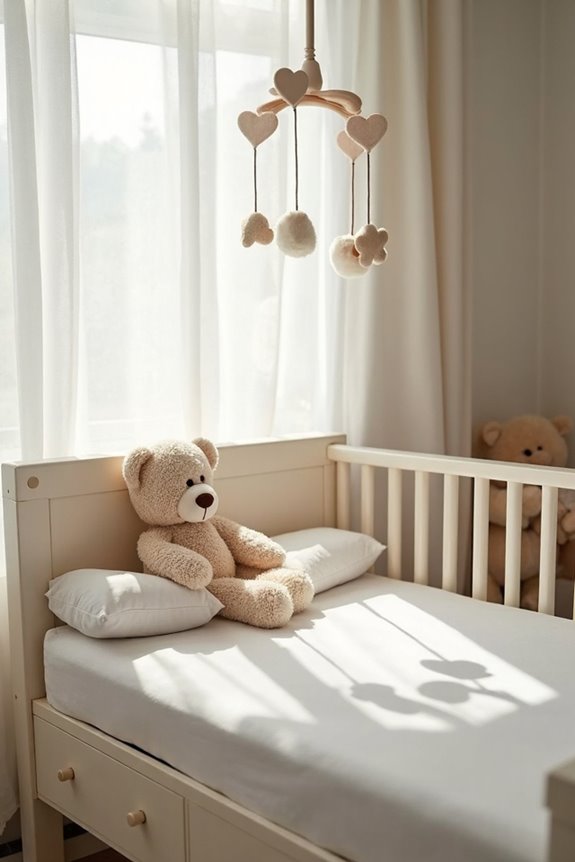
When it comes to creating a safe sleep environment for our babies, ensuring that the sleeping surface is both firm and flat is crucial. Let’s explore the key sleep surface characteristics and why they matter:
- Firmness: A firm mattress reduces the risk of SIDS and suffocation. It doesn’t indent, keeping our little ones in a safe position. Plus, it must meet safety standards like those from the U.S. Consumer Product Safety Commission.
- Flatness: The surface shouldn’t incline more than 10 degrees. Babies should sleep on their backs, and any inclined products are typically unsafe.
Suffocation and Entrapment Hazards
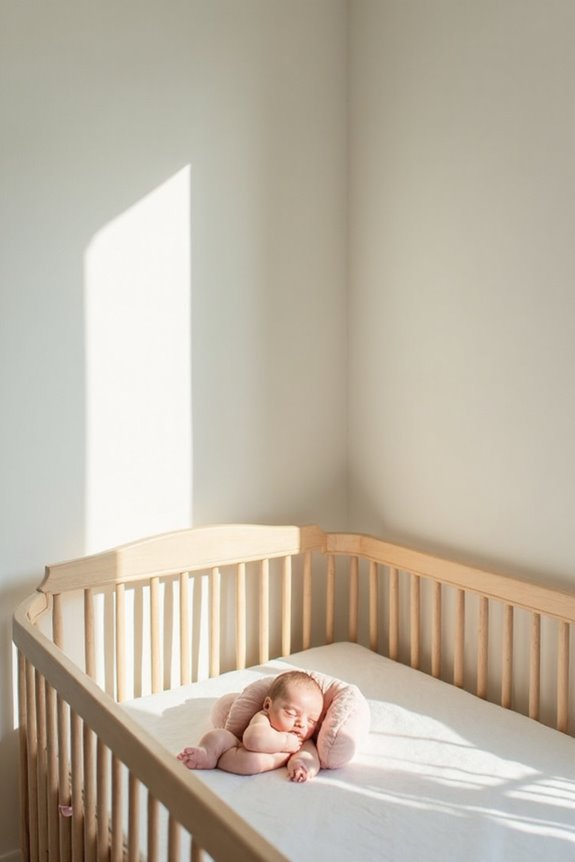
Creating a safe sleep environment for infants is crucial, and understanding the risks of suffocation and entrapment is a big part of that. We know that soft surfaces like pillows can pose significant suffocation risks. Tragically, at least 162 infant deaths have been linked to nursing pillows since 2007. Most of these heartbreaking incidents involve babies under 4 months old, often occurring in bassinets or other sleep areas where pillows are present.
Let’s also consider entrapment hazards. U-shaped pillows can trap infants, obstructing their airways. In shared sleep environments, these risks increase. The safest approach? Ensure cribs are free from pillows and soft bedding, focusing on firm, flat surfaces. By staying informed and vigilant, you can help protect your little one from these dangers.
Recommendations From Pediatric Experts
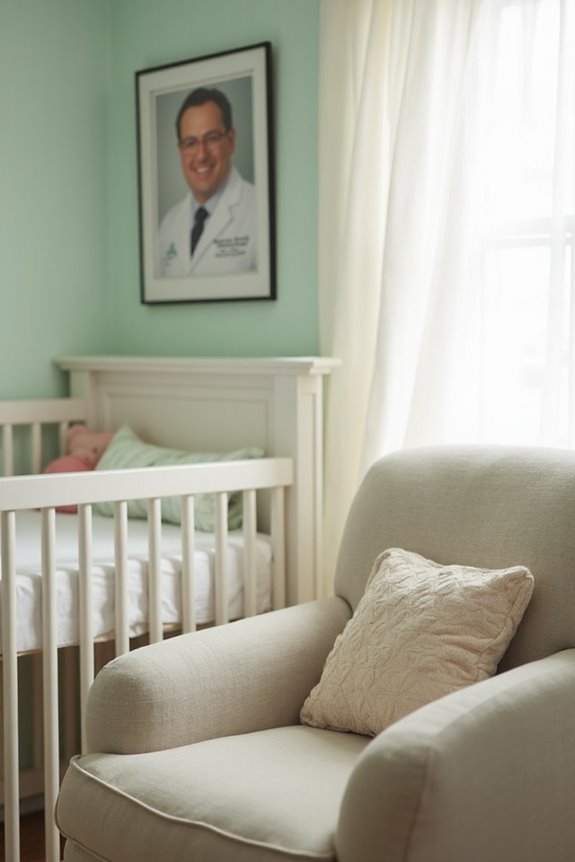
We’ve discussed the serious risks of suffocation and entrapment that pillows pose for infants, so let’s explore when it’s safe to introduce them according to pediatric experts. Based on pediatric recommendations, pillows should be avoided for children under 2 years old. The American Academy of Pediatrics (AAP) highlights that waiting until after age 2 significantly reduces the risks of SIDS and suffocation.
Here’s why:
- Motor Skills: By age 2, toddlers typically have the motor skills to maintain an open airway.
- Development: Each child’s development varies, so consulting a pediatrician for personalized advice is wise.
- Transition: Introducing a pillow often coincides with moving from a crib to a bed, aligning with pillow safety guidelines.
Always consult with your pediatrician to ensure pillow safety for your child.
Safe Practices for Toddler Pillow Introduction
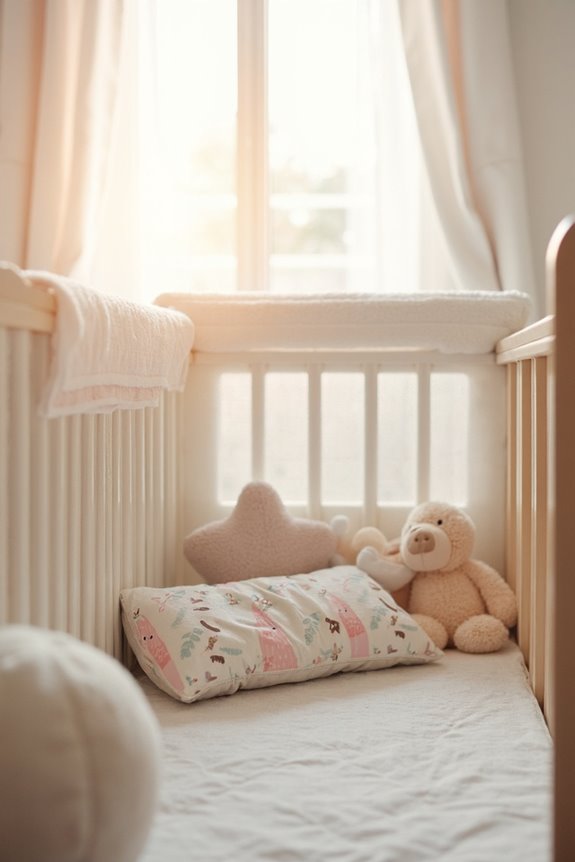
Although it might be tempting to give your toddler a pillow for added comfort, it’s crucial to introduce it safely to ensure their well-being. Let’s discuss some best practices:
- Timing: We should wait until our child is at least 18 months old, with many experts recommending around 2 years old.
- Pillow Materials: Choosing breathable, hypoallergenic materials is essential for safety and comfort. These prevent overheating and allergic reactions.
- Toddler Preferences: Observe their interest in using a pillow and transition slowly, perhaps starting with naps.
- Pillow Size: Opt for a small pillow, about 12×16 inches, to ensure proper head and neck alignment.
Monitoring and Ensuring a Safe Sleep Environment
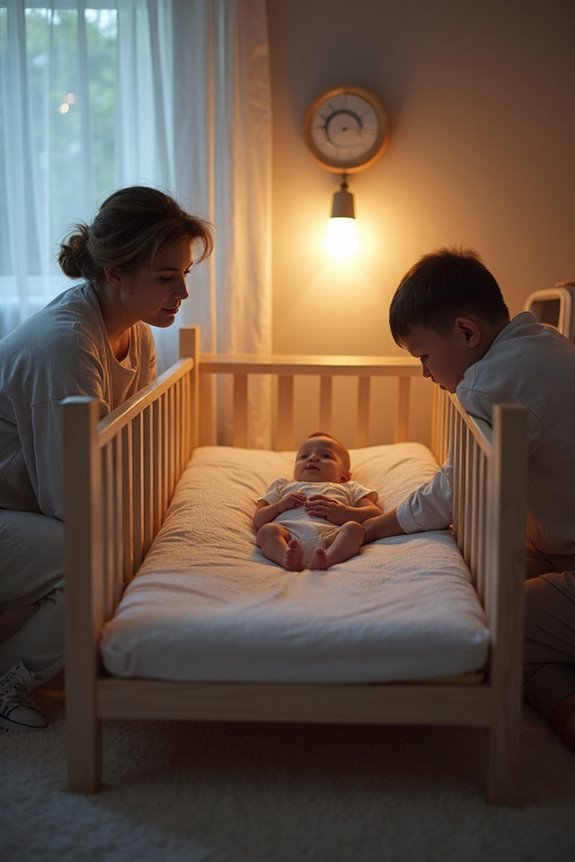
Ensuring a safe sleep environment for our little ones is crucial, especially when transitioning them to using a pillow. We need to be diligent about hazard monitoring to protect our babies. Let’s keep their crib free from soft bedding, toys, and crib bumpers as these can pose serious suffocation risks. A firm, flat mattress with a tight-fitting sheet is ideal.
Frequently Asked Questions
Can Using a Pillow Help With a Baby’s Flat Head Syndrome?
We know you’re concerned about flat head syndrome. While some specialized pillows claim benefits, it’s crucial to consult a healthcare professional. Let’s ensure our little ones’ safety by exploring all options together and making informed decisions.
Are Organic Pillows Safer for Babies?
Let’s not put the cart before the horse—organic pillow benefits don’t guarantee baby sleep safety. While they’re non-toxic, these pillows still pose risks like SIDS. Let’s prioritize safe sleep practices and keep our little ones secure.
How Do I Choose a Pillow for a Baby With Allergies?
Let’s explore choosing a baby’s pillow together. We’ll focus on pillow materials and allergy considerations. Hypoallergenic, breathable options with dust mite protection are key. Always consult healthcare professionals to keep our little ones safe and comfortable.
What Materials Are Used in Toddler Pillows?
We’re exploring toddler pillow materials like memory foam, offering pressure relief but needing careful selection due to density. Let’s choose hypoallergenic materials, ensuring comfort and safety for our little ones while embracing softness and breathability for restful nights.
Are There Specific Brands Recommended for Toddler Pillows?
Let’s explore toddler pillow brands together. Avocado Green Mattress and Coop Home Goods offer pillows adhering to pillow safety guidelines. They provide organic options with certifications like GREENGUARD Gold, ensuring our little ones are safe and comfortable.

